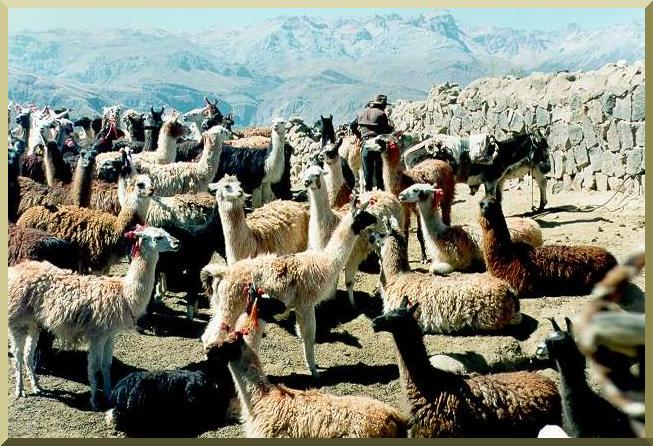|
In the summer of 1995, I traveled to the northern rim of the Colca Canyon,
in Arequipa, Peru,
accompanied by my daughter Tina and Carlos Machicao, a colleague and friend
who at the time, used to teach civil engineering at Arequipa's National University of San
Agustin. Our party included a driver and a local guide.
We left Arequipa early on the morning of July 28,
and after several hours of arduous travel across deep canyons
and majestic mountaintops, managed to reach
a town where we found many people gathered in the main plaza,
celebrating the anniversary of Peruvian Independence.
Unaware of our exact whereabouts,
I introduced myself to a lady in the crowd
and asked her the name of the town.
She said: "This is Machahuay."
I asked her: "Is this the town that the "Mambo de Machahuay"
was named after?
She answered: "You are quite right."
We were pleasantly surprised and proceeded to engage the locals in
spirited conversation.
Later on,
our party climbed a nearby hill to get a better view of the breathtaking
surroundings. Once there,
we sang, at full volume, the "Mambo de Machahuay."
The experience was one that would be hard to forget.
|
(Huayno) [Interpreted by Luis Abanto Morales]
Desde Lima vengo a mi Machahuay,
Mambo, qué rico mambo,
A la media noche voy a regresar,
|
| |||||

